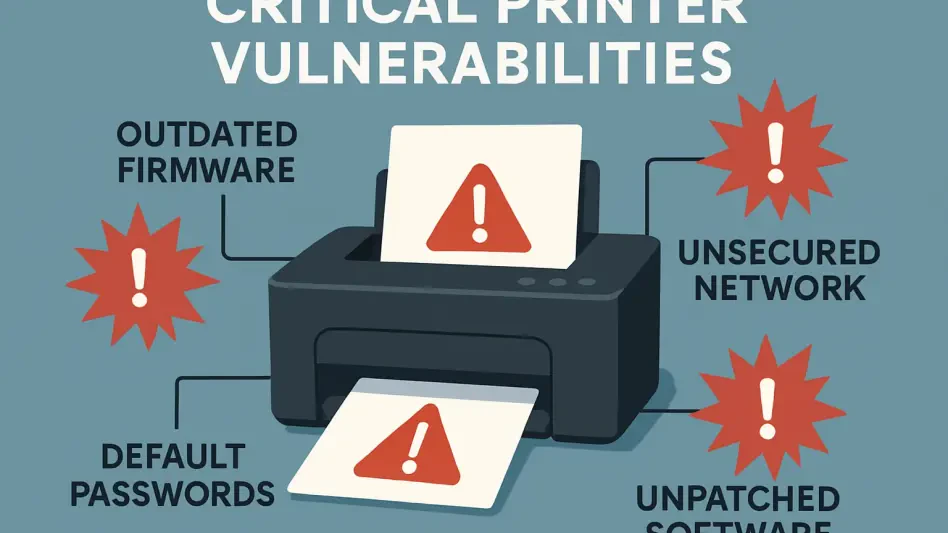Picture a bustling hospital where sensitive patient information flows through various devices, including printers. A flaw in these devices could lead to vital data being displayed and jeopardized. Alarmingly, over 748 printer models from major brands harbor vulnerabilities exposing organizations to significant risks. This statistic underscores the critical need for heightened security measures in traditionally overlooked office equipment like printers.
The importance of printer security in today’s digital world
The rapid expansion of the Internet of Things (IoT) has led to increased vulnerability in connected devices, including printers. With the rise in digital transformation, many organizations, particularly in sensitive sectors such as healthcare, often overlook non-traditional devices in their security strategies. As printers become multifunctional hubs for information processing, their security becomes as imperative as computer networks. Protecting printing devices, especially within industries that handle sensitive data, should be at the forefront of security concerns.
Analyzing key printer vulnerabilities and risks
Recent investigations into printer security revealed critical vulnerabilities, including a 9.8 authentication bypass flaw. As multifunction devices, printers are sources of overlooked yet significant security risks. Rapid7 discovered several notable vulnerabilities across well-known brands, highlighting how seemingly benign office equipment can serve as entry points for data breaches. These discoveries emphasize the importance of prioritizing printer security in safeguarding organizational data integrity.
Expert insights on printer security risks
Steven Fewer, a principal security researcher at Rapid7, shared remediation methods for addressing printer vulnerabilities. These insights stress the importance of verifying firmware updates to ensure security measures are applied correctly. John Gallagher, a vice president at Viakoo, highlighted the challenges of managing printer security outside traditional IT oversight, emphasizing the importance of addressing vulnerabilities to protect sensitive organizational data. David Matalon from Venn pointed out how expanded work environments increase risk, suggesting that organizations should focus on securing all data access pathways.
Effective strategies to mitigate printer-related risks
Organizations can implement practical steps to safeguard against printer-related vulnerabilities. Conducting thorough vulnerability assessments and managing device inventories are critical first steps. Rapid7 recommends updating firmware and changing administrator credentials as immediate remediation techniques. Additionally, employing defense-in-depth strategies, such as segregating printer networks and enabling automatic updates, can significantly lower exposure to risks. By incorporating these measures, organizations can secure their printing devices and reduce the likelihood of data breaches.
Organizations grappling with printer vulnerabilities found themselves confronted with challenges requiring immediate action. Understanding the expanded threat landscape, organizations took strategic steps to mitigate risks, emphasizing patching and maintaining devices outside of direct IT oversight. As these entities moved toward strengthening security strategies, incorporating expert guidance and best practices, they effectively enhanced their defenses against growing cyber threats. Through proactive measures, they demonstrated foresight in securing all facets of their digital environments.








